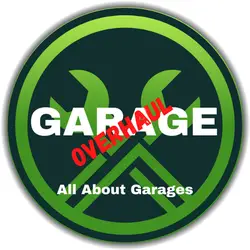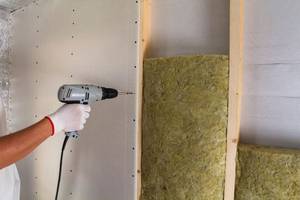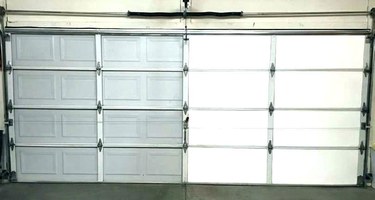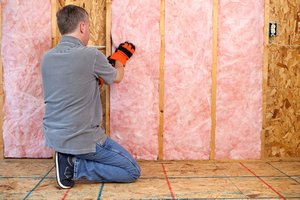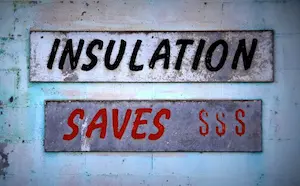What R-Value Should I Use To Insulate My Garage Ceiling?
This post contains affiliate links.
Finding out the R-value for your garage insulation is crucial if you want to enjoy the benefits of this home repair. Keep reading to learn what the ideal R-value range is for a garage!
If you’re like most people, your garage is one of the most neglected areas in your home. However, suppose you use your garage as a workshop or spend a significant amount of time there. In that case, it’s necessary to ensure that it’s adequately insulated. To properly insulate your garage, you must know what R-value to use.
Garage ceilings need a material with an R-value between R-13 and R-30. This will ensure that your garage is properly insulated and that heat stays inside your home.
This blog post will explore what R-Value you should use for insulating your garage ceiling and why. We’ll also provide some helpful tips on identifying when your garage needs replacement on insulation. So, let’s get started!
What Does R-Value Mean In Insulation Projects?
The R-value measures how much the material resists the flow of heat. The higher the R-value, the better the insulation is considered. The R-value of a material is determined by its ability to conduct heat, thickness, and density.
The R-value of a material can be increased by adding air spaces or by using multiple layers of the insulation material. Air spaces, for example, reduce the amount of contact between layers, and multiple layers increase the distance that heat must travel through the material.
Therefore, when calculating resistance, professionals must consider various factors that can change how heat dissipates through various materials.
What Is The Recommended R-Value For Insulating Garages?
On average, the recommended R-value of a garage ceiling should be between R-13 and R-30 in most climates. However, it is vital to consider the environment of your specific location and any other unique factors. (such as whether or not there are living spaces above the garage) when determining the necessary R-value for your project.
So how do you find the R-value? In most cases, a formula is used to calculate the R-value of any insulation material. However, suppose you want to find it on your own. In that case, you can usually discover the R-value on the packaging of your materials.
However, the best way to determine your R-value is to get an energy audit done. An energy audit, performed by a professional, is the best way to discover the state of affairs and how you can improve the R-value to keep your home warm and safe.
What Types Of Insulation Are Best For Garages?
The type of insulation you use in your garage can vary based on personal preference and the unique factors of the project. However, it is important to consider the R-value, installation process and cost when determining the best insulation option for your project.
In addition, pay attention to any special requirements, such as fire safety considerations, when selecting the type of insulation for your project.
It is always recommended to consult a professional for guidance on the best insulation option for your specific project. Here are some of the best choices you can try out that work for most insulation projects:
- Blown-In Fiberglass Or Cellulose: This type of insulation can be blown into place using special equipment, making it a good option for hard-to-reach areas. Regarding cost, fiberglass tends to be less expensive, but cellulose can have a higher R-value. This is why Blown-in or cellulose insulation is one of the most common choices for insulating garages.
- Foam Board Insulation: This type of insulation comes in rigid panels (paid link) that can be cut to fit and installed directly onto the garage ceiling. It offers a high R-value and can provide some air-sealing benefits, making it a good option for improving energy efficiency. However, it can be more expensive and may require professional installation.
- Spray Foam Insulation: This type of insulation is sprayed onto the surface, filling in any gaps and providing a tight seal. Spray foam (paid link) is an excellent choice when looking for a higher R-value. In addition to this, it can also accomplish the role of sealing the air. As a result, you will be able to lower your energy costs in the future. However, because of the intricacy needed to install this insulation, you may have to opt for professional installation.
- Reflective Foil Insulation: This type of insulation uses shiny material (paid link) to reflect heat, making it a good option for garages in hot climates. It is relatively inexpensive and easy to install. Still, it may not offer as high of an R-value as other options.
- Radiant Barrier Insulation: This type of insulation uses reflective material to block radiant heat, similar to the method mentioned above. This is why this type of insulation is usually chosen in warmer climates. It is also typically used in conjunction with other types of insulation for added benefits. The good news is that this type of insulation is generally easy to install; in the garage but does not have a very high R-value.
How To Tell When Your Insulation Needs Replacing
A few tell-tale signs indicate your garage ceiling insulation needs to be replaced. If you notice any of the following, it is best to reach out to a professional for help:
- Visible signs of damage or deterioration on the insulation itself
- An increase in energy bills
- Uneven temperatures or hot/cold spots in the garage
- Excessive noise coming from the outside or between floors in your home.
- Pest infestations in the insulation.
You can replace your insulation before any drastic problems arise by keeping an eye out for such issues. This way, you can avoid having to deal with expensive repairs.
Also, check the other articles on our insulation series covering the whole garage here and here.
Conclusion
Properly insulating your garage can provide numerous benefits for the space’s functionality and comfort. It is essential to consider all factors, especially the needed R-value. Consult a professional if you are unsure or have any concerns about the installation process. In the end, investing in insulation can save you money and improve the overall enjoyment of your garage.
